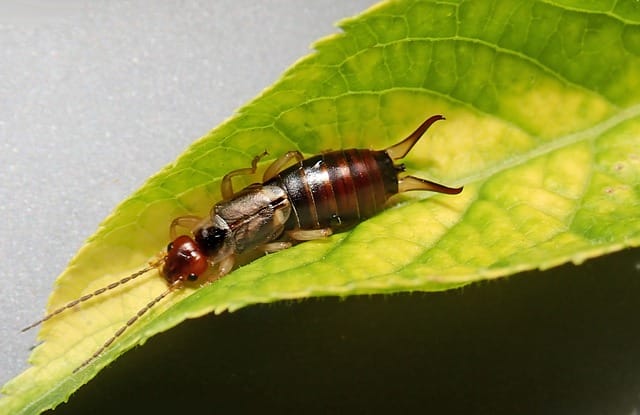Fighting gardening pests: Earwigs
Gardening can bring immense joy and fulfillment, but it also comes with its fair share of challenges

In this article:
- Introduction
- Identification of Earwigs
- Life Cycle of Earwigs
- Signs of Earwig Infestation
- Common Garden Plants Affected by Earwigs
- Natural Predators of Earwigs
- Organic Methods to Control Earwigs
- Chemical Control Options
- Prevention and Cultural Practices in Earwig Management
- Integrated Pest Management (IPM) for Earwigs
- Conclusion and Final Thoughts
Introduction
Gardening can bring immense joy and fulfillment, but it also comes with its fair share of challenges. One of the most common gardening pests that gardeners often have to deal with is earwigs. These small insects can wreak havoc on your plants if left unchecked. This article aims to provide you with an in-depth understanding of earwigs and effective methods to combat their infestation.
Identification of Earwigs
Earwigs, also known as pincher bugs, are slender, flat insects that belong to the order Dermaptera. They are easily identifiable by their forceps-like pincers located at the end of their abdomen. Earwigs range in size from 0.5 to 1 inch and are typically reddish-brown or black in color.
Life Cycle of Earwigs
Understanding the life cycle of earwigs can help you adopt appropriate control measures. Earwigs undergo incomplete metamorphosis, meaning they go through three stages in their lifecycle: egg, nymph, and adult. Female earwigs lay their eggs in the soil during spring or summer, and the nymphs emerge after a few weeks. It takes approximately one year for an earwig to reach maturity.
Signs of Earwig Infestation
Identifying the presence of earwigs is crucial in determining whether your garden is infested. Some common signs of earwig infestation include chewed leaves, irregular holes in flowers and fruits, and chew marks on plant stems. During the day, earwigs tend to hide in dark, damp areas near the base of plants or under garden debris.
Common Garden Plants Affected by Earwigs
Earwigs are known to feed on a wide range of garden plants. Vegetables such as lettuce, corn, and potatoes, as well as ornamental plants like dahlias and roses, are particularly susceptible to earwig damage. They generally target succulent tissues, leaving behind ragged edges and chewed sections.
Natural Predators of Earwigs
Fortunately, there are several natural predators that can help control earwig populations in your garden. These include birds, toads, frogs, lizards, and predatory insects such as ground beetles and centipedes. Creating a garden-friendly environment that attracts these beneficial creatures can significantly reduce the number of earwigs in your garden.
Organic Methods to Control Earwigs
If you prefer to use organic methods to control earwigs in your garden, there are several effective options available. One approach is to trap the earwigs by placing damp rolled-up newspapers or cardboard tubes in your garden. Earwigs will seek shelter in these traps, allowing you to easily remove and dispose of them. Additionally, spreading diatomaceous earth around affected plants acts as a physical barrier that irritates and dehydrates the pests.
Chemical Control Options
In cases where an earwig infestation is severe or other control methods have failed, chemical control options may be necessary. There are various insecticides available in the market that specifically target earwigs. Before using any chemical product, ensure you read and follow the instructions carefully to minimize potential harm to yourself, the environment, and beneficial insects.
Prevention and Cultural Practices in Earwig Management
Preventing earwig infestations in the first place is the most effective strategy in managing these pests. Regularly removing garden debris, such as fallen leaves and weeds, will eliminate potential hiding spots for earwigs. Additionally, promoting good garden hygiene, such as minimizing excessive moisture and providing adequate spacing between plants, can make the environment less favorable for earwigs.
Integrated Pest Management (IPM) for Earwigs
Integrated Pest Management (IPM) is a holistic approach that combines various pest control methods for long-term management. By integrating cultural practices, natural predators, and targeted use of insecticides when necessary, you can achieve effective earwig control while minimizing negative impacts on the environment.
Conclusion and Final Thoughts
Dealing with earwig infestations in your garden can be a challenging task, but with the right knowledge and strategies, you can effectively combat these pesky pests. Remember to observe the signs of infestation, identify the affected plants, and employ appropriate control methods. By implementing preventive measures and maintaining good garden practices, you can enjoy a thriving garden free from the nuisance of earwigs.
